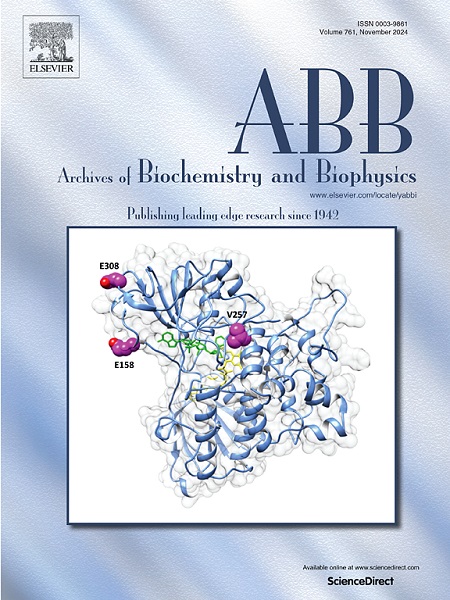Insights from selenoprotein I mouse models for understanding biological roles of this enzyme
IF 3.8
3区 生物学
Q2 BIOCHEMISTRY & MOLECULAR BIOLOGY
引用次数: 0
Abstract
Selenoprotein I (selenoi) is a metabolic enzyme expressed in a wide variety of tissues that catalyzes the transfer of the ethanolamine phosphate group from CDP-ethanolamine to lipid acceptors to generate ethanolamine phospholipids. It is a member of the selenoprotein family, a class of proteins that mostly play fundamental roles in redox homeostasis and are defined by the co-translational incorporation of selenium in the form of selenocysteine. Loss-of-function mutations in the human SELENOI gene have been found in rare cases leading to a complex form of hereditary spastic paraplegia. Understanding the roles of this selenoprotein and its phospholipid products in different cell types has benefited from the development of mouse models. In particular, global and conditional knockout (KO) of the Selenoi gene in mice has enabled a more complete picture to emerge of how this important selenoprotein is integrated into metabolic pathways. These data have revealed how Selenoi loss-of-function affects embryogenesis, neurodevelopment, the immune system and liver physiology. This review summarizes the insights gained through mouse model experiments and the current understanding the different physiological roles played by this selenoprotein.

硒蛋白I小鼠模型对了解该酶的生物学作用的见解。
硒蛋白I (selenoi)是一种在多种组织中表达的代谢酶,它催化乙醇胺磷酸基团从cdp -乙醇胺转移到脂质受体,生成乙醇胺磷脂。它是硒蛋白家族的一员,硒蛋白家族是一类主要在氧化还原稳态中起基础作用的蛋白质,由硒以硒半胱氨酸的形式共翻译结合而定义。人类SELENOI基因的功能丧失突变在罕见病例中被发现导致复杂形式的遗传性痉挛性截瘫。了解这种硒蛋白及其磷脂产物在不同细胞类型中的作用得益于小鼠模型的发展。特别是,小鼠硒酸盐基因的全局和条件敲除(KO)使人们能够更全面地了解这种重要的硒蛋白是如何整合到代谢途径中的。这些数据揭示了硒酸盐功能丧失如何影响胚胎发生、神经发育、免疫系统和肝脏生理。本文综述了通过小鼠模型实验获得的见解以及目前对该硒蛋白所起的不同生理作用的认识。
本文章由计算机程序翻译,如有差异,请以英文原文为准。
求助全文
约1分钟内获得全文
求助全文
来源期刊

Archives of biochemistry and biophysics
生物-生化与分子生物学
CiteScore
7.40
自引率
0.00%
发文量
245
审稿时长
26 days
期刊介绍:
Archives of Biochemistry and Biophysics publishes quality original articles and reviews in the developing areas of biochemistry and biophysics.
Research Areas Include:
• Enzyme and protein structure, function, regulation. Folding, turnover, and post-translational processing
• Biological oxidations, free radical reactions, redox signaling, oxygenases, P450 reactions
• Signal transduction, receptors, membrane transport, intracellular signals. Cellular and integrated metabolism.
 求助内容:
求助内容: 应助结果提醒方式:
应助结果提醒方式:


